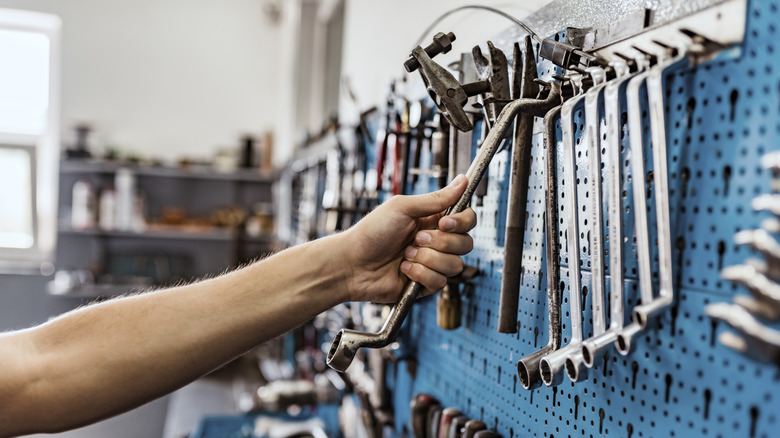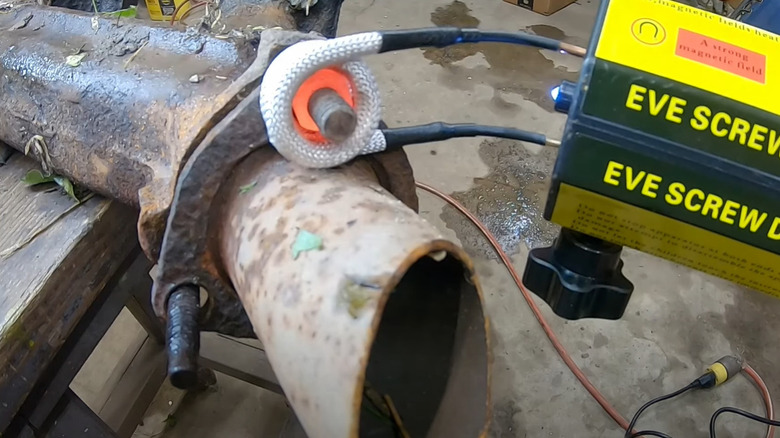The Useful Tool That's Great For Tackling Rusty Nuts And Bolts
We may receive a commission on purchases made from links.
Whether you're tinkering with an old car, bringing old furniture back to life, or fixing up things around the house, a rusted bolt can slow you down. Sure, you can try a wrench or douse it with WD-40 penetrating oil, but sometimes, those methods just don't cut it. This is where an induction heater tool steps in to save the day. This nifty gadget uses electromagnetic fields to heat the metal directly. The heat loosens up the rust's grip, making it easy to twist off even the most stubborn nuts and bolts. If you're someone who deals with metal fasteners often, this tool is going to make your life so much easier. Plus, it's safer and faster than battling it out with traditional tools or using WD-40 at home.
One of the coolest things about an induction heater is how precise it is. It focuses the heat exactly where you need it, without frying the surrounding parts. If you've ever accidentally melted something you didn't mean to with a blowtorch, you'll really appreciate this feature. It's especially handy for automotive repairs or working on delicate machinery. With an induction heater, you can get the job done quickly without worrying about collateral damage.
Another big win for the induction heater? It saves you tons of time and effort. No more spending hours struggling with a single bolt. Just heat it up, and it's off in minutes. For pros, this means more efficiency and the chance to squeeze in more jobs. For DIY folks, it means less frustration and more time to actually enjoy your projects. If you're interested, you can get induction heater kits on Amazon from brands like Harsire.
How to use an induction heater
Using an induction heater might sound a bit technical, but it's actually easier than it sounds. First things first — make sure the area is clean and clear of anything flammable. Safety is important, so throw on some gloves and safety glasses before you get started. Afterward, plug in your induction heater and grab the right coil size for the bolt you're dealing with. The coil should fit snugly around the fastener but shouldn't be touching it. Once you've got the coil in place, switch on the heater. You'll see it work its magic as the metal starts heating up in seconds.
Watch the bolt as it heats. You don't want to overdo it — just heat it enough to expand the metal a bit and break that stubborn rust grip. When it's hot enough, turn off the heater and grab your wrench. The bolt should loosen up and come out much more easily now.
If it's still being stubborn, give it another few seconds of heat and try again. Patience is key here. Let the tool do the heavy lifting instead of forcing it, which could break the bolt or mess up other parts around it. It's a simple process that saves a ton of frustration, especially when you want to remove rusted screws to prevent breakage.

